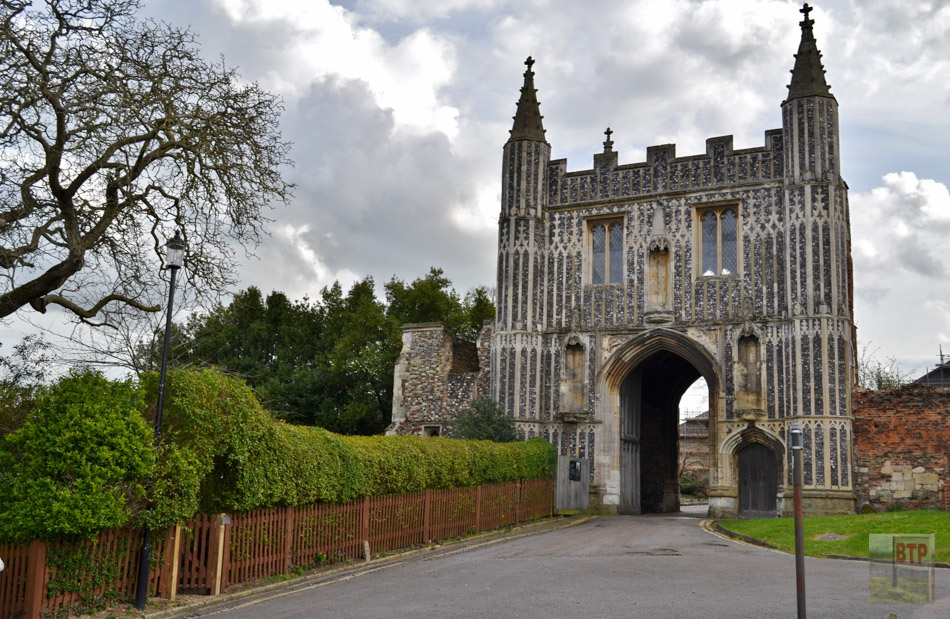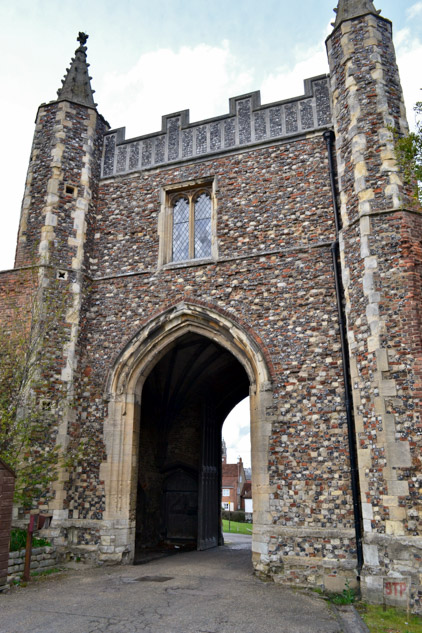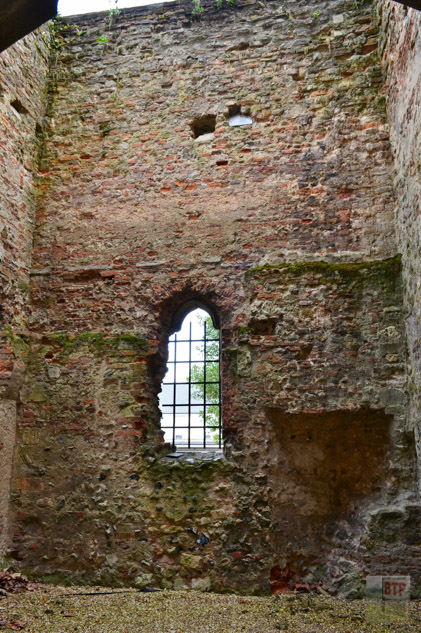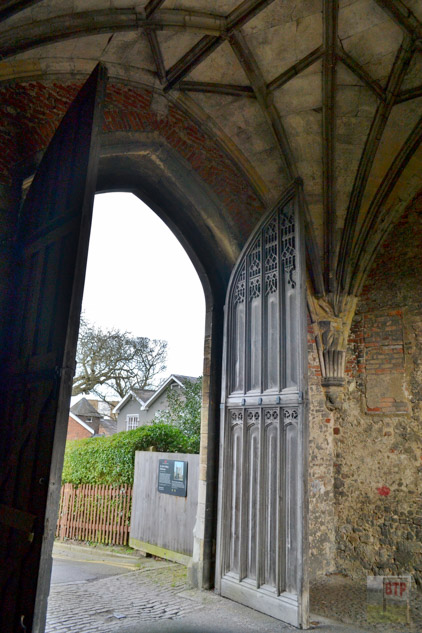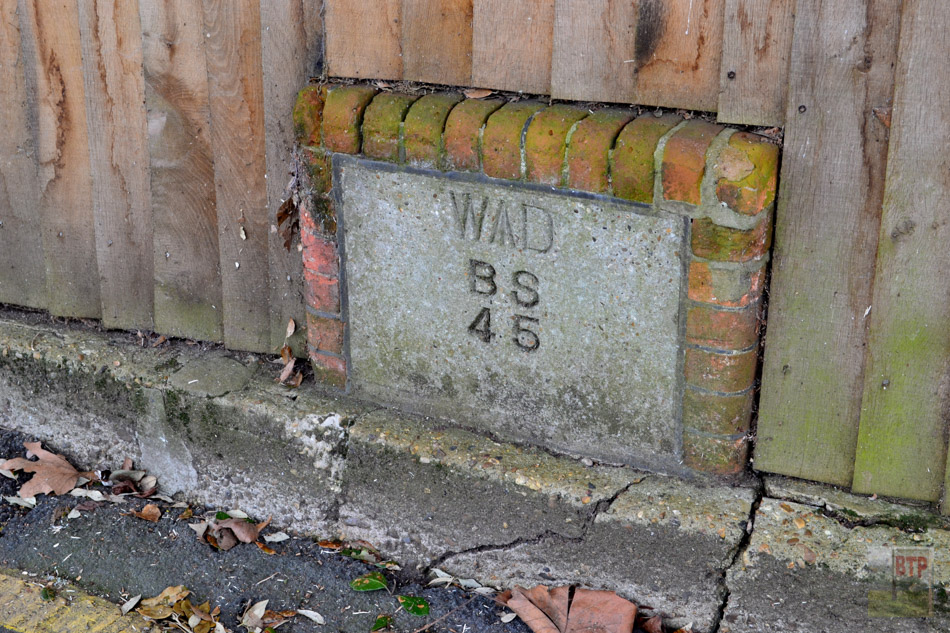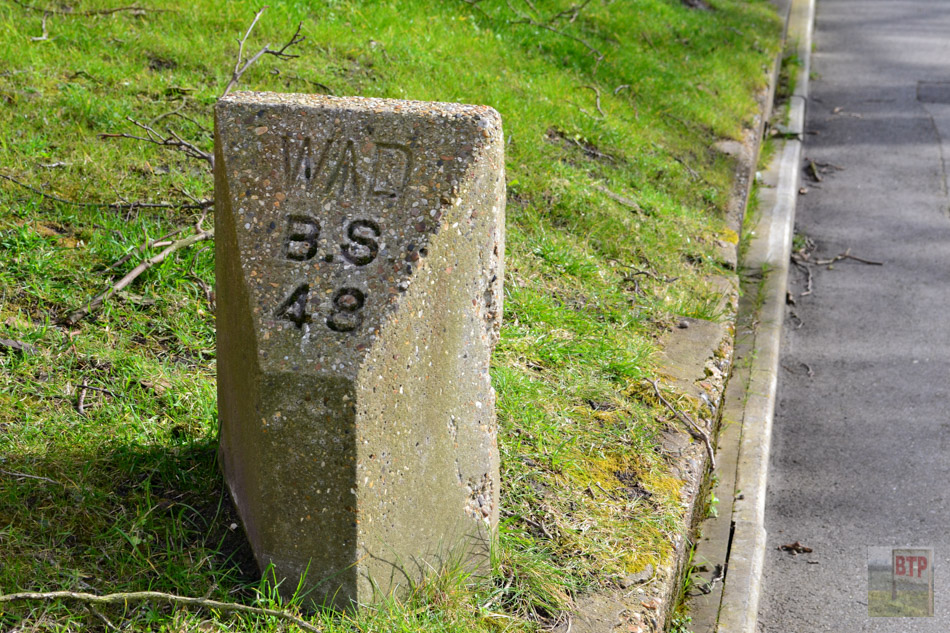St. Johns’ Abbey was a very wealthy Benedictine abbey situated in Colchester, Essex. It functioned between 1096 and 1539. All that survives today is this stunning gatehouse built around 1400. It is now owned by English Heritage and is Grade I listed – you can walk through it publicly today. The structure is architecturally beautiful; bearing East Anglian ‘flushwork’; a combination of flint and ashlar set flat into the stonework, creating a spectacular white and grey contrast. During the English Civil War, the abbey fell on the site of the Royalist Lucas family, and the gatehouse was bombarded and stormed under siege from Parliamentarian soldiers.
St. John’s Abbey was originally the location of a Saxon church dedicated to either St. John the Baptist, or St. John the Evangelist. This was evacuated in the 1970s and found to be a three-part structure made out of Roman rubble. After Norman conquest in 1066, the town became a possession of Eudo Dapifer who was steward to William I and King William II. He claimed to have witnessed a miracle at St. John’s Church and used this excuse to found a monastery on the site, gaining support from the Bishop of London in 1096. In 1133 the abbey suffered an enormous fire which burned much of Colchester. The offices and monks’ quarters on site had to be relocated, and the abbey rebuilt. Lay peoples were not allowed to worship in the abbey building, and hence St. Giles church which remains today was built for their worship. During the 1381 Peasants’ Revolt, the abbey was attacked by the rebels led by Wat Tyler. During the Wars of the Roses, the abbey held strong pro-Plantagenet feelings and became intwined with its politics. When the Tudors won, King Henry VII viewed the abbey with suspicion, having stayed there during his visit to Colchester. The abbey was disestablished in 1539 following the Dissolution of the Monasteries three years earlier; its last abbot John Beche refused to hand over the abbey to the King and went to trial resulting in him being hanged for treason. In 1548, the abbey was bought by the Lucas Family and the abbey church was slowly demolished over the following century (excavated in 2010). They built a large manor on its site, but kept the walls and gatehouse which survives today. In 1860, the War Office bought the grounds and it became part of Colchester Garrison; several War Office markers can be found around the site today (pictured).
Sources: Wikipedia, English Heritage

